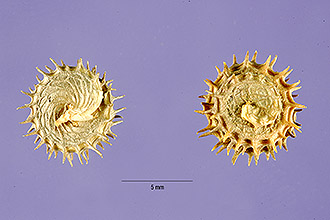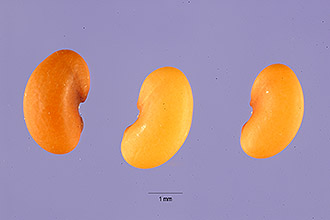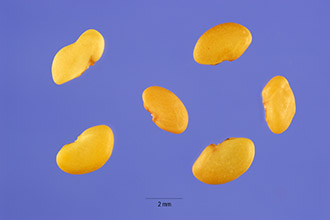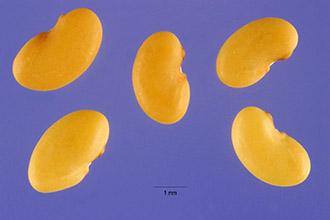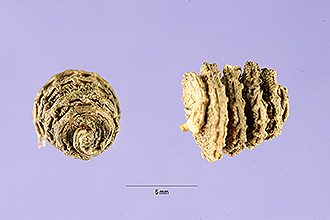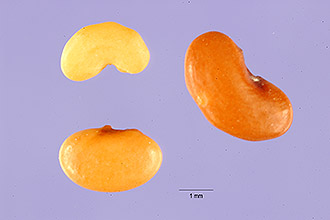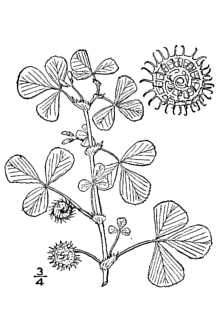Medicago hispida Gaertn. var. apiculata (Willd.) Urb.
Scientific Name: Medicago hispida Gaertn. var. apiculata (Willd.) Urb.
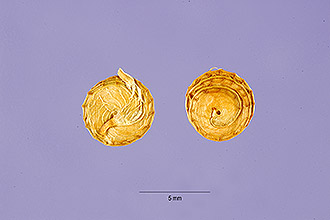
| General Information | |
|---|---|
| Usda Symbol | MEHIA |
| Group | Dicot |
| Life Cycle | AnnualPerennial, |
| Growth Habits | Forb/herb |
| Native Locations | MEHIA |
Plant Guide
Alternate Names
Common Names: burr clover, bur-clover, burclover, bur medic, burr medic, burmedic, California bur clover, Southern bur clover, toothed bur clover, bur trefoil, rough medic, toothed medic, toothed medick, creeping burr Scientific Names: Medicago polymorpha L, var denticulate (Willd,) Kergue’len, M, polymorpha L, brevispina (Benth,) Heyn, M, polymorpha L, var polymorpha, M, hispida, M, lappacea, M, nigra, M, polycarpa , Use soil moisture sensors to measure the soil moisture of Medicago hispida Gaertn. var. apiculata (Willd.) Urb..
Uses
Green Manure/Cover Crop:Bur clover is a cool-season legume that originated in the Mediterranean region of Europe and has become established throughout most of the world (Muir et al., 2001). It is very useful for soil restoration, green manure, and winter cover for erosion control, especially in drought ridden areas. Bur clover will boost soil organic matter in well-drained soils (Clark et al). Its rapid, dense growth characteristics, ability to fix N and increase available soil nitrogen supply, make it very useful as a green manure. (Denton et al., 2007). Total plant N yields range from 50-125 lb N/acre, with 1500-8000 lb/acre/yr of dry matter (Clark, 2007) (SAREP, 2013). Forage/Livestock/Ley-farming: Bur clover is a nutritious, highly palatable and N2 fixing forage plant for slightly neutral to alkaline soils in Mediterranean climate regions (Del Pozo, 2002). In central Chile, where it is broadly naturalized, it is considered the most valuable nitrogen-fixing legume for pasture improvement (Graziano, 2010). Bur clover is used extensively in ley-farming systems. This system integrates crop and livestock production in semiarid, dryland farming regions. It is based on the rotation of cereal crops with reseeding annual legumes (Cocks, 1992; Graziano et al.,2010). During the fallow/pasture period, bur clover is used to increase the amount of nitrogen in the soil, due to its ability to fix atmospheric nitrogen in their root nodules, potentially removing the need for additional nitrogen fertilizers. It also disturbs the life cycle of pests, and protects soil against degradation. In long-term crop/bur clover rotations, the persistence of its seed typically regenerates during the pasture phase from seed banks in the soil (Denton et al., 2007). Biomass production can be upwards to 8300 lb/acre with Nitrogen content between 1.18%-1.65% (SAREP, 2013). For hay production, it is mixed with oats and wheat and mature stands are highly nutritious (FAO, 2007) . Peoples and Bladock (2001) indicated that including bur clover in pasture could increase total forage production 3-to5-fold, grass dry matter yields by 25-100% and improve grass N concentrations by up to .6%. In a study in Texas, herbage yields differed considerably among years primarily due to rainfall differences, with dry matter herbage yields ranging from 1200-4800 lb/acre. Low productivity in poor rainfall years, may hinder its use in south-central US (Muir et al., 2009). Bur clover has a mean protein content of 19% by weight and 6.25% of the protein is presumably N (SAREP, 2013). It is very similar to alfalfa but there is less fiber and somewhat more fat and protein (USDA Farmers Bulletin 693, 1915). Crude fiber, protein, and ash contents are as follows, 15-28%, 14-28%, and 6-25% respectively (USDA Farmers Bulletin 693, 1915). Medics establish better under permanent pasture than under any rotation system involving tillage (Clark, 2010). For permanent pastures in the South, a combination of bur clover and Bermuda grass are used. The Bermuda grass supplies pasturage during the warm weather. Bur clover begins to grow in the fall and provides feed during the winter and spring. Under favorable conditions, bur clover will make grow 18 to 24 inches tall and will yield 2-3 tons of hay/acre (USDA Farmers Bulletin 693, 1915). Natural Resources Conservation Service Plant Guide In California, much of bur clover’s value depends on the large crop of bur clover pods. Sheep utilize the ripe pods in the summer, when other forage is in short supply. When the pods are abundant, the pasture sheep will fatten rapidly. The spines may bother the livestock, but the rains soften the coating making them more palatable (USDA Farmers Bulletin, 693, 1915). However, the fruits may become entangled in sheep’s wool, making it less valuable. Using spineless varieties, such as ‘Santiago’, would benefit in these areas. In Italy, Fois et al. (2000) studied the nutritional value of bur clover when used in sheep farming systems. They found that the chemical composition of the forage was good throughout the years, with high crude protein values (20-29.6%) and low nutrient detergent fiber (33-47%) content. When bur clover is growing in dense, cultivated lands it is best not to pasture it continuously, but to put the livestock on the land for only a few hours each day, as this reduces injury by trampling (USDA Farmers Bulletin 693, 1915). Few cases have been recorded of bur clover causing bloat, where growth is lush, care should be exercised. Bur clover was studied in subtropical and sub-humid zones in Pakistan, to see if adapted to its climate. Anwar et al. (2012) found that bur clover could potentially be used for rangelands and marginal croplands and produced between 1-2.3 tons per acre. For annual legumes, such as bur clover, even though intensive grazing lowers the size and number of its leaves, it also results in a more continuous leaf cover, increased dry-matter production, and increased number of flowers and seeds. Rochon et al. (1994) found that rotationally grazed paddocks sown with bur clover showed increased productivity under heavy grazing intensity. Livestock must be carefully managed, however, during the flowering stage in order to avoid depletion of the seed bank caused by seed intake (Rochon et al. 2004). Removing grazing animals in the middle of flowering reduced the consumption of flowers and allowed for greater seed survival later in the growing season. Vineyards/Orchards:Solid stands of bur clover have been observed in many non-tillage orchards and vineyards in California and can be promoted with lime, calcium, phosphorus, and sulfur additions (SAREP, 2013). It competes well with other winter annual legumes and grasses in almond orchards in California. In trials, from Northern California to Mexico, naturalized and imported bur clover varieties were the best performing legume cover crops (Clark, 2007). In Italy, alternatives to herbicides and tillage have been explored in vineyards. Using bur clover as an annual self-seeding legume in orchards showed great success. It established readily and had full cover in the winter and spring. In three years, it produced between 1.65-1.96 t/A of dry matter (Nieddu et al., 2000). In orchards, seeding commercial cultivars may be preferred because they are widely available and better suited to local climatic conditions (Clark, 2007). Smother Crops:Bur clover grows quickly in the spring and will suppress weeds early in the growing season. Fall weeds can be controlled by its re-growth after harvest, whether it is overseeded or interplanted with the grain or the grain is seeded into an established stand (Clark, 2007). In California, winters are rainy and not very cold, and when used in mixtures with grasses and other legumes, it will provide continuous cover that can crowd out weeds and reduce weed seed populations (Clark, 2007). Olmstead et al. (2001) found that good vegetative cover of Santiago bur clover restricted weed establishment in vineyards due to its highly prostate growth, early emergence, and high biomass production. Because of these traits, it could be used as a viable cover for use in drip-irrigation vineyards in the dry conditions of the Pacific Northwest. Crop Rotation:Inter-cropping bur clover into row crops of corn has been proposed as a strategy to suppress weeds, control soil erosion, and contribute N to companion or subsequent corn crops, in Michigan (Jeranyama et al., 1998). Santiago bur clover was successfully overseeded into no-till corn when planted 21-42 days after corn planting during a 2 year trial. In this study, bur clover provided a good source of N when moisture conditions were low. If there is abundant moisture during its growing season, bur clover can produce 3 t/acre of dry matter, and 3-4% plant tissue N, contributing more than 200 lb N/acre (Clark, 2007) Winter wheat-corn rotations are common in the mid-west US. The period between wheat harvest and corn planting is an ideal time for establishing bur clover. When planted after wheat, it has been shown to accumulate above ground biomass of between 1875-4700 lb/acre and increase no-till corn yields, when planted at least 14 days after corn plantings (Fisk et al., 2001). Bur clover and other medic’s planted after wheat harvest reduced weed density and dry weight of winter annual weeds before planting no-till corn. De Hann et al., (1997) found that bur clover yields ranged from 540-2700 lb/acre which compared well with other forage legumes adapted to northern central USA, including hairy vetch. Their results also indicated that it is best to delay seeding of bur clover until about 28 days after corn planting, a time normally coinciding with the last cultivation. Seeding earlier tends to cause competition between the medics and corn, which results in lower corn yields. Emergency forages:Emergency forges are required when there is severe winter kill of alfalfa in northern locations. In a study in Michigan by Shrestha et al. (1998) they looked at bur clover for use as an emergency forage, based on its wide use in other parts of the world for soil erosion control, livestock feed, and for supplying N to the soil. They found that Santiago bur clover was successful as emergency forage, when planted in early May and yielded 22 lb/acre of N when seeded at 13 lb/acre. It is only useful for one harvest, and upright cultivars of bur clover may be better suited for hay, since Santiago is more prostrate. Zhu et al. (1996), looked at Santiago and ‘Serena’ bur clover cultivars for their potential use in north central US. They concluded that ‘Serena’ and ‘Santiago’ have potential for producing high yields of quality forage in the north central US when seeded in spring or summer, but did not survive the winter. Bur clover’s variability in maturity, forage yield, and forge quality may be a great potential for selecting medics to meet specific management practices and environments. Agroforestry:There is also the possibility of utilizing bur clover in association with trees (Graziano et al., 2010). It has been found particularly useful in the regeneration of degraded pastures in a silvopasture system dominated by Acacia caven. Pioneer Species:Bur clover could be successfully exploited in environmentally appropriate areas to rehabilitate deteriorated grasslands affected by fires and overgrazing.
Status
Please consult the PLANTS Web site and your State Department of Natural Resources for bur clover’s current status (e.g., threatened or endangered species, state noxious status, and wetland indicator values).
Weediness
Bur clover may become weedy or invasive in some regions or habitats and may displace desirable vegetation if not properly managed. In California, it is very troublesome in turfgrass seedings. Please consult with your local NRCS Field Office, Cooperative Extension Service office, state natural resource, or state agriculture department regarding its status and use. Weed information is also available from the PLANTS Web site at http://plants.usda.gov/. Please consult the Related Web Sites on the Plant Profile for this species for further information.
Description
Bur clover has weak stems, trifoliate leaves, inconspicuous yellow flowers and a shallow root system. (FAO, 2007) It is an autogamous, hard seeded, self re-seeding winter or spring annual legume that is native to the Mediterranean basin, where it is widely distributed as a wild plant (Graziano et al., 2010). It branches profusely at its base and can attain heights of about 6-10 inches. It is very prostrate, but if in dense stands may become erect. Bur clover is a prolific seed producer, making it very useful in pastures and reclaimed unproductive lands. It grows rapidly following rains, and can fix nitrogen. Bur clover leaves are mostly hairless. The leaflets are wide and flat on top, which sometimes have purple and white markings on their upper surface or a small inverted V mark at the base of the leaf. Bur clover has small yellow flowers that are arranged in clusters of 5-10. The fruits are hairless and have 2-6 coils and 6-8 seeds per pod. Well developed plants may contain more than 1000 pods. Mature fruits have coiled pods that have spines, forming the bur, where it gets its common name from. There are also cultivars of bur clover with short spines and no spines. (USDA Farmers Bulletin 693, 1915). Bur clover flowers from 100-126 days after planting depending on location, time of seeding, and cultivars used. In California, flowering can occur from March-October with seed ripening from July to September (SAREP, 2013). There are differences in its phenology, morphology and agronomic traits, depending on where grown, and cultivars used (Graziano et al., 2010). In studies in Chile, there were many patterns of phenological differences which can be explained by the differences in bioclimatic and edaphic conditions within each environment. Temperature and photoperiod are the main environmental factors controlling phenology in bur clover, and both differ greatly in different parts of the world (Del Pozo et al., 2002). In general, spiny accessions are late flowering and produce high amounts of biomass. These plants mainly grow in high rainfall areas with lower temperatures, and lower evapotranspiration rates (Del Pozo et al.,2002). Lower altitude populations showed higher winter vigor than did the higher altitude populations. It appears that there is a common trend for this trait among annual legumes of Mediterranean origin (Del Pozo et al., 2002). Later flowering, low winter vigor, and high frost tolerance appear to be selectively favored strategies for populations of annual legumes in predictably colder and wetter environments (Del Pozo et al., 2002).
Ethnobotany
Iran:Bur clover is endemic to many areas in Iran. Historically and currently, the whole plant is utilized. The leaves of young shoots are used as herbs and fresh fodder (Ahmad et al., 2013). India: Bur clover is used for medicinal purposes for skin plagues and dysentery (Chaudhary, 2010). Pakistan: In tribal areas of Pakistan where many families have been displaced due to war, bur clover’s leaves and stems are used as pot vegetables in its fresh and dry form. The micronutrient content of bur clover leaves were analyzed and the results were: ash (11.3%); crude fiber (18.8%); acid detergent fiber (ADF) (53.6%); NDF
Habitat
Bur clover is native to the Mediterranean region and successfully naturalized in Mediterranean-like climates. It is often found in desert regions, field borders, fallow fields, waste places, ditches, irrigation channels, and roadsides (FAO, 2007; University of California, 2011). Bur clover will succeed in practically all types of soils, but loams are most suitable (USDA Farmers Bulletin 693, 1915). In the Southern US, the plants grow best in soils rich in lime, but will survive in poorer soils. It prefers moist, well drained soils, but in California it grows vigorously in adobe soils, which are often poorly drained. The plants will mature much later in soils that have very high moisture contents than on well-drained sites (USDA Farmers Bulletin 693, 1915).
Adaptation
Bur clover adapted to regions where temperatures are low are likely to have low winter vigor. Many studies noted it was more common to find frost tolerant species in mild regions (Loi et al., 1993; Cocks, 1992). It will tolerate a freeze of 22-24 F even in the seedling stage but at 18F it will be killed. Bur clovers are normally winter annuals, where species are seeded in late summer and germinate in early fall, grow during the fall, winter and spring, and mature early in the summer. It is primarily adapted to regions with mild, moist winter and in the US, it maintains itself naturally in the south, southwest, and Pacific coast. In Northern areas, they will succeed fairly well when the seed is sown in the spring, but rarely are able to maintain themselves by reseeding from year to year (USDA Farmers Bulletin 693, 1915). Optimal annual rainfall is 10-25 inches per year, but can do quite well in arid conditions. Like other annual medics, bur clover is well adapted to alkaline soils. However, it is also able to grow on moderately acidic soils due to its tolerance of acidic conditions during the nodulation phase (Graziano et al., 2010). Favorable growth is usually restricted to soils with a pH of 4.7-8 (Bullitta et a., 1994). In Chile, it can occupy both moderately acid (in the South) and alkaline soils (in the North), as it does in other Mediterranean environments (Del Pozo et al., 2002). The hardseedness of bur clover is important to this species especially in very dry areas, as it allows the seed to germinate only when conditions are favorable (Graziano et al., 2010). The populations that originated from areas with more annual rainfall, had smaller pod and seed dimensions than those from drier environments (Graziano et al., 2010). These results are also seen in Loi et al., (1995) and confirm that seed and pod dimensions have an adaptive value. Flowering period usually begins in February, when seeded as a winter annual. On very moist soils, the plants are later maturing than on well-drained soils and will produce more total biomass and seed yields (Graziano et al.,2010). Early flowering accessions tended to be from drier and warmer habitats, and many authors have found similar results in several other annual legumes (Graziano et al., 2010, Ehrman and Cocks, 1990, 1996; Del Pozo et al., 2002a, 2002b). Bur clover is most adapted to heavy loams but will survive in a wide range of soil types. It inhabits all exposures and grows well under light conditions varying from full sunlight to heavy shade (Graziano et al., 2010). It is a common volunteer in the understory’s of California orchards, including walnut, which are heavily shaded from April to November (SAREP, 2013). Bur clover, in comparison to other medics, is quite adaptable to poorly drained soils (Bullitta et al., 1994) (Charman, 2004). Although bur clover is not widely sown on waterlogged soils, naturalized strains in these areas preformed well. Bur clover should be more widely sown in pasture mixtures on these soils types, for their continued survival. These features coupled with highly variable flowering phenology are clearly instrumental in this species ability to expand its range and to survive unfavorable periods in a wide variety of bioclimatic zones.
Establishment
Bur clover requires about 10-25 inches of rainfall per year, where ample moisture is available early in the fall. It will produce plants in low-rainfall years if winters are not too cold (SAREP, 2013). Bur clover is usually a winter annual legume that produces abundant hard seed, which may not germinate for 2-3 years. In dry years, 1-2 irrigations may be required in ensure establishment prior to fall rains, in Mediterranean like climates (SAREP, 2013). Seeding rates of bur clover vary depending on site conditions. Bur clover can be seeded from 9-30 lb/A. The high end of the seeding rate may be needed if it has never been established in that area. Plant bur clover to depths of ¼- ½ inches at 8-22 lb/acre, if drilled, and 12-26 lb/acre, if broadcasted (Clark, 2007). Broadcasting bur clover followed by light harrowing can be achieved successfully, with a firm seed bed prepared beforehand. Scarification of the seed may also be necessary to ensure proper establishment. Hulled seed may be sown by a grain drill with a press wheel attachment. Bur clover should always be sown in late summer or fall, except if being used in Northern climates as emergency forage, where late spring seedings are recommended. Late seedings should be avoided if possible, because it provides little time for fall and winter growth and plants are more susceptible to cold temperatures and frost heaving. Earlier seedings or unusually dry falls may need a second irrigation to keep seedling from being lost to drought. Bur clover used in Michigan for emergency forage is planted in the spring, at a rate of 10-14 lb/acre. Seventy days after planting, it produced between 0.4-1.4 tons/acre (Shrestha et al., 2010).When no-tilled planted into wheat stubble in early August, and weighed in October, Santiago bur clover yielded 1.1 t/acre of dry matter. Bur clover needs to be inoculated with Rhizobial inoculate types. It is good at nodulating on acidic soils when acid tolerant rhizobia are used such as, Sinorhizobium melilti and S. medicae, strains WSM688/WSM1115/WSM419 (Charman, 2004). Bur clover is self pollinating and self regenerating (FAO, 2007). Muir et al. (2001) found that less than or equal to 200 plants/m2 is probably sufficient for maximum DM yields under favorable growing conditions. Cocks (1988) reported that high seeding rates from 18-36 lb/A, resulted in greater seed production despite seedling competition. Muir et al. (2001) found similar results only with P fertilization. Initial seeding rates must include consideration that persisting seed reserves of at least 179 lb/A, are critical for long-term stand maintenance in some environments (Carter and Lake, 1985).
Management
Normal tillage and mowing equipment are appropriate for managing stands, but pure stands may lie close to the ground and be difficult to mow (SAREP, 2013). To maintain bur clover stands, the area should be mowed leaving about 3-5 inches on the surface. Use phosphorus, and sulfur to encourage bur clover in mixed grass/clover stands. Those nutrients are often needed in establishing and maintaining bur clover seedings, as are potassium and nitrogen on poorer soils (SAREP, 2013). Once good stands are established, bur clover will re-seed year after year without any additional seeding. Under some conditions bur clover seed will retain its vitality in the soil for 2-3 years, so many volunteers are common. (USDA Farmers Bulletin 693, 1915) Seed yield can be reduced by excessive grazing, frost, and drought. Dense stands of sod forming warm season grasses generally limit re-establishment of bur clover under pasture conditions in high rainfall environments, in Texas (Muir et al., 2001). Based on the high variability of this species, Del Pozo (2002), recommends using mixtures of early- and late-flowering ecotypes with short- and long-season growth, respectively. This will help provide balanced production and survival in subhumid, semiarid, or arid zones. This is essential for long term agronomic success of any introduced annual legume species. Bur clover, as well as other pasture legumes, have a high requirement for phosphorus. Adequate application of phosphate, at a rate of 26-36 lb/acre, fertilizer is a primary requirement for areas that are low in this nutrient. In addition, calcium and trace element deficiencies can also seriously limit its nitrogen fixation through direct adverse effects on plant growth. Managing these nutrients is a must in bur clover stands (Rochon et al., 2004). Management practices of planting time, cultivar selection, and grazing need to be planned to avoid problems with later seedings of bur clover (Walsh et al., 2001). With good spring management, in grazing systems, more than 1 t/ha of seed can be expected (Fois et al., 2000).
Pests and Potential Problems
Alfalfa weevil damage can be very widespread and cause extensive damage. Tarnished plant bugs and small loppers have also been found on bur clover plants at extremely high densities (SAREP, 2013). Nematodes associated with bur clover include Ditylenchus dipsaci, Heterodera glycines, H. trifolii, Meloidogyne incognita, and Pratylenchus. Bur clover can be afflicted by bean yellow mosaic virus, pea mosaic virus, and 13 species of fungi. The only insect that does serious damage to bur clover is the clover seed Chalcis fly, which also attacks red clover and alfalfa (USDA Farmers Bulletin 693, 1915). It only attacks the seed and will not harm the herbage. Phoma black stem disease is common in bur clover stands after the first year of establishment and will cause almost complete defoliation in pastures in Western Australia (Barbetti and Fang, 1991). This fungal disease is known to stimulate the production of phytoestrogenic compounds in all medics and if in the diets of livestock such as sheep can decrease ovulation rates. The severity of Phoma black stem disease and coumestrol content is also correlated. Coumestrol levels as low as 25ppm, in the diet of sheep, has significantly affected ovulation rates (Barbetti and Fang, 1991).
Environmental Concerns
Concerns
Concerns
Bur clover can become a weed on cultivated lands and pastures in California and Arizona (FAO, 2007) (Del Pozo et al., 2002).
Control
Most medics, including bur clover, can be controlled with 2,4-DB, Eradicane, and Buctril before emergence (Shrestha et al., 2010). Please contact your local agricultural extension specialist or county weed specialist to learn what works best in your area and how to use it safely. Always read label and safety instructions for each control method. Trade names and control measures appear in this document only to provide specific information. USDA NRCS does not guarantee or warranty the products and control methods named, and other products may be equally effective.
Seeds and Plant Production
Plant Production
Plant Production
Seeds are produced in round, coiled burs surrounded by spiny hooks, which can cling to animal coats, assisting seed distribution. There can be 3-11 seeds per bur and are separated by partitions. The seeds are 2-4 mm long and oval. The average seed yield in California is 300-500 lb/acre of hulled seeds (USDA Farmers Bulletin 693, 1915). The seed weight of 1 bushel of clean dry burs weighs 6-13 lbs and contains 2-4 lb of seed (USDA Farmers Bulletin 693, 1915). Depending on the cultivar being used, these characteristics can be variable. Bur clover seed is hard, which helps ensure stand regeneration, and may need to be scarified or boiled before seeding to increase germination. There are 145,000-280,000 seeds per lb, depending on the specific variety being used and environmental conditions. Seed maturity is in mid-April-May if sown in the fall, in warm climates (SAREP, 2013). Most of the commercial seed available in the US, is in California. The seed is harvested as an impurity with wheat and other grain crops from which is separated at a seed processing facility (USDA Farmers Bulletin 693, 1915). The simplest method in harvesting pure stands of bur clover is by sweeping by hand with large still brooms. Among machines that have been used are mowers, self rake reapers, combines, and specially devised suction machines. Commercial seed suppliers are limited, but certain cultivars may be locally available. Image from Del Pozo et al. (2002) showing the range in size and shape of bur clover seeds in Chile. Environmental factors, such as photoperiod and temperature, have a significant effect. Cultivars, Improved, and Selected Materials (and area of origin) Even though there are many cultivars, few are commercially available in the US, and most of the existing ones were developed in Australia, and have shown poor adaptability to other Mediterranean climates (Graziano et al., 2012.) ‘Santiago’: Santiago bur clover was collected near Santiago, Chile in 1962 and released in 1988. It was initially selected for its high seed yield and spineless pods. Santiago has small basal purple anthocynanin markings on its leaflets. Its leaflets have a protruding terminal tooth. Santiago flowers in 84 days after late May sowing in Western Australia and slightly later in cooler areas. When moisture limits growth in the spring, it can remain vegetative longer than other cultivars of similar maturity. High seed yields have resulted in high plant densities in regeneration pastures, meaning higher dry matter production, especially in winter and spring. Santiago bur clover is well adapted to a wide range of soils. It has some resistance to blue green aphid, and is resistant to Staganospora meliloti, which causes root and crown root. (Ewing et al., 1989). Santiago is used in fleece producing sheep operations, so wool value is not lowered. ‘Scimitar’: is a crossbred medic produced by the South Australian Research and Development Institute from existing germplasm and was officially released in 2002. Its leaves are dark green and are characterized by purplish-red coloring on the mid-rib and lateral vein on the front and back of the leaf. It flowers in 90 days, which is a week later than Santiago, but will vary in different environments. Scimitar pods are grey-brown and have no spines and their coils are counterclockwise in appearance. The seeds are yellowish brown, kidney shaped, and weigh 4 mg. It has a more erect growth habit, and its adaptable to many soil types. Scimitar demonstrates excellent salt tolerance during critical growth periods and its adapted to short-lived waterlogged conditions (See Cavalier for seeding, management, and other properties) (Department of Agriculture Farmnote 83, 2004). ‘Cavalier’ was also released in 2002 by the South Australian Research and development Institute. It has some brown-purple fleck on its leaflets. It is paler in color than Santiago. It flowers in 90 days, and produces significantly larger pods than the other varieties and are a light brown color. The seeds are slightly larger, are yellow brown, kidney-shaped and weigh about 4.5mg. It is adapted to sandy clay loams and red clay loams, with soils having a pH 4.8-8. Cavalier can tolerate some waterlogging, but not extended periods of flooding. It is a mid-season maturing plant and is adapted to areas where rainfall is between 15-22 inches in the growing season. Cavalier produces high seed and herbage yield. Its hard seed will soften more readily, which allows for better pasture regeneration. It also has some salt tolerance. It has little resistance to blue-green aphid and is susceptible to spotted alfalfa aphid and cowpea aphid. Cavalier shows moderate resistance to root lesion nematode. It also contains low levels of coumestrol (up to 35 ppm), which is acceptable. Cavalier needs good weed control prior to seeding. Seed shallow and fertilize with phosphate, potash and trace elements when needed. It can be successfully established when seeded with other medics and clovers. Sow at 15-22 lb/acre when used in monocultures or seed at 4-9 lb/acre in mixtures. All new seedings must be inoculated with proper Rhizobial strains in group AM. Cavalier can tolerate moderate grazing 6-8 weeks after germination. Remove grazing animals during flowering in first year to allow seed production. A dry, shallow cultivation at the end of the summer will ensure seed pods become buried allow for successful regeneration (Department of Agriculture Farmnote 83, 2004). ‘Serena’: Serena bur clover is prostrate or semi erect and attains heights up to 8 inches depending on plant density. Stems that are exposed to sun may have purple anthocyanin flush. Stems, petioles, and peduncles are glabrous, with sparse hairs. ‘Armadillo’: Selected from naturalized population in south-central Texas, Armadillo bur clover was released in 1998 by Texas A&M University Agricultural Research Station at Beeville (Ueckert et al., 2003). It is adapted for south Texas with seed being available through Pogue Seed Company. It provides earlier grazing than clover and will continue to grow until early May. It may re-seed itself for many years with proper grazing. Armadillo is best suited for clay or clay loam soils with a pH higher than 6.5. It has shown some hardiness when seeded with warm season grasses. Plant Armadillo bur clover between October 1st and November 30th , at a depth of ¼ - ¾ inches using a seeding rate of 6-10 lb/acre, when drilled. If broadcasted, increase the seeding rate to 8-12 lb/acre, and even higher rates up to 16 lb/acre if broadcasting into sod of warm season pastures. Fertilize the soil with 40-60 units per acre of nitrogen, phosphorus and potassium (Buehring, 1999). Armadillo produced over 3600 lb/acre during the winter months (Ocumpaugh, 1997). Forage crude protein for Armadillo bur medic was 16.2% in the initial seeding year and 24.6% in the second year when harvested at 2 inches. Armadillo performs poorly on sandy, acid soils (Evers, 2010). References: Ahmad, K., Ahmad, M., and C. Weckerle. 2013. Ethnobotanical studies of the eastern plains of Takht-E-Sulaiman hills. Pak.J.Bot. 45(S1):197-205. Anwar, M., M.A. Ullah, A.S. Rana, and S. Maqsood. 2012. Evaluating the performance of Australian annual medics in sub-tropical and sub-humid ecological zones of Pakistan. Pak.J.Agri.Sci 49(2):185-188. Buehring, Harvey. 1999. Release of a new cool season forage legume. Southern Livestock.com [Online]. Available at http://www.southernlivestock.com/ articles/columnists/farm__ranch_happenings. 3688.sls (accessed 2 Feb 203). Bullitta,S., M.D. Hayward, A. Loi, C. Porqueddu, and F. Veronesi. 1994. Morphological and biochemical variation in Sardinian populations of Medicago polymorpha L. suitable for rain fed Mediterranean conditions. Euphytica. 77:263-268 Charman, N. and R.A. Ballard. 2004. Burr medic (Medicago polymorpha L.) selections for improved N2 fixation with naturalized soil rhizobia. Soil Biol.Biochem. 36:1331-1337. Chaudhary, Richa Singh. 2010. Taxa of family Fabaceae: A potential of local medicinal values in Vindhya region Uttar Pradesh, India. International Journal of Pharma and Biosciences. 1:46-53. Clark, A.2007. Managing cover crop profitably. 3rd ed. SARE Outreach, College Park, Maryland. Cocks, P.S. 1992. Plant attributed leading to persistence in grazed annual medics (Medicago spp.) growing in rotation with wheat. Aust.J.Agric.Res. 43:1559-1570. De Hann, R.L., C.C. Sheaffer, and D.K. Barnes.1997. Effect of annual medic smother plants on weed control and yield in corn. Agron.J. 89:813-821. Del Pozo, A., C. Ovalle, J. Aronson, and J. Avendano. 2002. Ecotypic differentiation in Medicago polymorpha L. along an environmental gradient in central Chile. I. Phenology, biomass production and reproductive patterns. Plant Ecology. 159:119-130. Del Pozo, A., C. Ovalle, J. Aronson, and J. Avendano. 2002. Ecotypic differentiation in Medicago polymorpha L. along an environmental gradient in central Chile. II. Winter growth as related to
Conservation
District at http://www.nrcs.usda.gov/ and visit the PLANTS Web site at http://plants.usda.gov/ or the Plant Materials Program Web site http://plant-materials.nrcs.usda.gov. PLANTS is not responsible for the content or availability of other Web sites.
Fact Sheet
Uses
Livestock: All classes of livestock except horses and mules will eat burclover readily, especially when the plant is maturing. Mature stands are highly nutritious and, when abundant, may serve as a finishing feed for lambs. Where growth is lush, the herbage has been known to cause bloat in livestock, particularly those unaccustomed to grazing it. Heavy use of the pods is most noticeable after the spiny burs have been softened by fall rains. While summer grazing burclover, sheep often accumulate numerous burs in the wool, lessening the value of the clip. Cropland: Burclover is commonly used as a cover crop in orchards. Its rapid, dense growth characteristics and its ability as a legume to fix nitrogen and thus increase the available soil nitrogen supply add to its value for such use. Burclover is particularly useful in orchards and vineyards as a reseeding annual used in association with strip cover management. It can be mowed to control excessive growth, which will not hinder its ability to produce a seed crop for the next year. After seed maturity it can be mowed or disked. Wildlife: Quail and deer make extensive use of the dry burs.
Status
Please consult the PLANTS Web site and your State Department of Natural Resources for this plant’s current status (e.g. threatened or endangered species, state noxious status, and wetland indicator values).
Weediness
This plant is considered noxious in Arizona. This plant may become weedy or invasive in some regions or habitats and may displace desirable vegetation if not properly managed. Please consult with your local NRCS Field Office, Cooperative Extension Service office, or state natural resource or agriculture department regarding its status and use. Weed information is also available from the PLANTS Web site at plants.usda.gov.
Description
Medicago polymorpha L,, burclover, is a shallow-rooted annual legume, The characteristic growth habit of burclover is one of numerous prostrate stems branching from the crown and spreading outward 6 to 30 inches, Use soil moisture sensors to measure the soil moisture of Medicago hispida Gaertn. var. apiculata (Willd.) Urb.., Where thick stands develop stems may become erect, obtaining heights of 18 to 24 inches in more favorable years, The leaves are subglabrous and clover-like in appearance, with leaflets normally wedge-shaped and toothed toward the top, The inflorescence is usually quite limited, presenting only a few small, yellow, pea-like flowers, The several-seeded fruit is a flattened, coiled pod, commonly up to 1/4 inch in width and fringed with a double row of conspicuous, hooked spines, Well developed plants may produce more than 1,000 pods, The seed is rather large for a legume of this type, usually developing to over 3/32 inch in length, Although often considered an indigenous California plant, burclover was introduced from southern Europe, Burclover has become extensively naturalized in the United States from cultivation as a hay or cover crop, It is one of the more widely recognized Medicago species, especially west of the Sierra Nevada and Cascade Mountains, where it is most abundant,
Adaptation
Burclover may occur in pure stands, but most often it is associated with other winter annuals, such as soft
Establishment
Burclover does poorly on soils of low fertility. In establishing stands, except on very fertile soils, the use of fertilizer is routinely recommended. Growth is especially poor on droughty, sulfur deficient, granite soils and fertilization with sulfur and phosphorous is required. Seedings of burclover are made in late summer or early fall. Later seeding provides little time for fall and winter growth and plants are more susceptible to cold temperatures and frost-heaving. The recommended seeding rate is 9 pounds per acre. In dry areas, one irrigation period just before seeding is ordinarily required. Earlier seeding or unusually dry falls may necessitate a second irrigation to keep seedlings from being lost to drought. Naturalized stands of burclover usually have adequate seed inoculation. For added success in developing new stands, inoculation of the seed with commercial inoculate is recommended. Scarification of the seed may also be necessary to ensure proper establishment.
Plant Traits
Growth Requirements
| Temperature, Minimum (°F) | 32 |
|---|---|
| Adapted to Coarse Textured Soils | No |
| Adapted to Fine Textured Soils | Yes |
| Adapted to Medium Textured Soils | Yes |
| Anaerobic Tolerance | None |
| CaCO3 Tolerance | None |
| Cold Stratification Required | Yes |
| Drought Tolerance | None |
| Fertility Requirement | Medium |
| Fire Tolerance | None |
| Frost Free Days, Minimum | 100 |
| Hedge Tolerance | None |
| Moisture Use | Medium |
| pH, Maximum | 8.2 |
| pH, Minimum | 5.9 |
| Precipitation, Maximum | 75 |
| Precipitation, Minimum | 12 |
| Root Depth, Minimum (inches) | 12 |
| Salinity Tolerance | None |
| Shade Tolerance | Intolerant |
Morphology/Physiology
| After Harvest Regrowth Rate | Slow |
|---|---|
| Toxicity | None |
| Shape and Orientation | Prostrate |
| Nitrogen Fixation | High |
| Resprout Ability | No |
| Active Growth Period | Fall, Winter and Spring |
| Bloat | Low |
| C:N Ratio | Low |
| Coppice Potential | No |
| Fall Conspicuous | No |
| Fire Resistant | No |
| Flower Color | Yellow |
| Flower Conspicuous | No |
| Foliage Color | Dark Green |
| Foliage Porosity Summer | Porous |
| Foliage Texture | Fine |
| Low Growing Grass | No |
| Lifespan | Short |
| Leaf Retention | No |
| Known Allelopath | No |
| Height, Mature (feet) | 1.3 |
| Growth Rate | Moderate |
| Growth Form | Single Crown |
| Fruit/Seed Conspicuous | Yes |
| Fruit/Seed Color | Brown |
| Foliage Porosity Winter | Porous |
Reproduction
| Vegetative Spread Rate | None |
|---|---|
| Small Grain | No |
| Seedling Vigor | Medium |
| Seed Spread Rate | Moderate |
| Seed per Pound | 170400 |
| Fruit/Seed Persistence | No |
| Propagated by Tubers | No |
| Propagated by Sprigs | No |
| Propagated by Sod | No |
| Propagated by Seed | Yes |
| Propagated by Corm | No |
| Propagated by Container | No |
| Propagated by Bulb | No |
| Propagated by Bare Root | No |
| Fruit/Seed Period End | Summer |
| Fruit/Seed Period Begin | Spring |
| Fruit/Seed Abundance | High |
| Commercial Availability | Routinely Available |
| Bloom Period | Winter |
| Propagated by Cuttings | No |
Suitability/Use
| Veneer Product | No |
|---|---|
| Pulpwood Product | No |
| Protein Potential | High |
| Post Product | No |
| Palatable Human | Yes |
| Palatable Graze Animal | High |
| Palatable Browse Animal | Medium |
| Nursery Stock Product | No |
| Naval Store Product | No |
| Lumber Product | No |
| Fodder Product | Yes |
| Christmas Tree Product | No |
| Berry/Nut/Seed Product | No |

